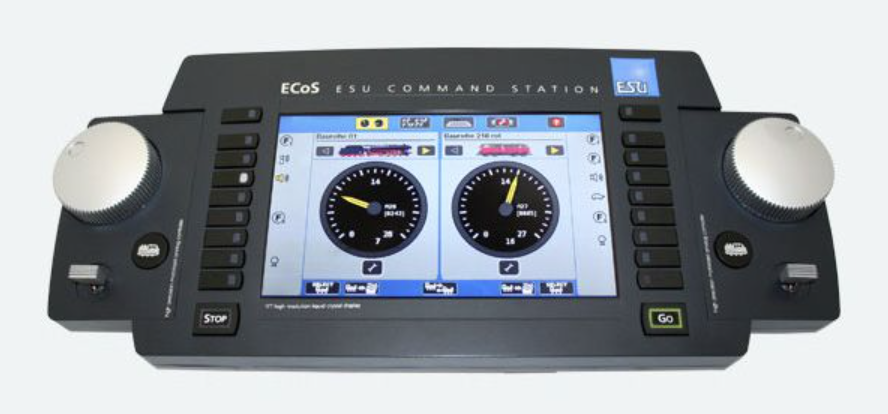 February 21 2023
February 21 2023 ESU ECoS RailCom Current Spikes Exceed PSXX Current Limit
Larry Maier [engineer and the designer of the PSXX] and I spent several hours digging into this. Without getting too technical, a DCC booster should have a consistent DCC square power wave. Our testing proves the design of the ECoS is prooducing current spikes that in some cases exceed 3 amps.
We cross tested the same PSXX and locos on NCE, Digitrax & MRC systems and the DCC power was consistent with no spikes. The PSXX performed without issue when set to different current and trip rates.
Here is what we have found after extensive testing an ECoS 50210 system & Cab Control 50310 systems with ESU V5 decoders installed in Kato N scale locos [latest hardware and firmware]:
- The ECoS has SIGNIFICANTLY LARGE current spikes; up to almost 3amps
- RailComm contributes to the large current spikes
- These current spikes are always present at regular intervals
- The current spikes exceed the PSXX current limit and trip rate default of two amps
- The PSXX are performing exactly as designed, protecting your equipment from potentially damaging current spikes!
- Current spikes increase as you increase speed steps 1-20 due to the decoder pulsing the motor [pulsing a motor is normal, but requires more current to overcome motor stiction than at higher speed steps where the motor is constantly spinning]
Our recommendations are as follows:
- Disable RailComm if you do not need to use it
- Set the PSXX Current Limit/Trip Rate to 4 amps by doing the following:
- You can set the trip rate by either:
- Programming cv49=4 -OR-
- Installing a jumper wires from:
- J61-J62 & J63-J64
PSXX CV57 Current Spike Delay (Rev G and later) April 2023
- Default=27. Acceptable values 27-255
- Small duration current spikes that occur occasionally can normally be ignored to prevent nuisance tripping of the breaker.
- As the duration of the spike increases and/or the frequency increases, the current spike(s) can become more of a problem for the layout.
- By default, the PSXX will ignore current spikes that are less than 100us in duration.
- This setting provides the most protection for your layout. However, the use of RailCom, some decoder's low speed control, and/or dirty track (among other things) can cause current spikes longer than 100us that occur with enough frequency that the breaker will trip at the default setting.
- Setting CV57=75 or CV57=125 will generally prevent the breaker from tripping under these circumstances.
- NOTE: setting this CV DOES NOT get rid of the current spikes, they are still present and can cause damage to your layout over the long term.Setting this CV simply tells the PSXX that it is OK not to trip on the current spikes.Normal short circuit tripping is not affected.
- Under these conditions, D18 (the blue LED) may be flickering or even continuously lit indicating frequent current spikes in excess of the PSXX trip current setting.
